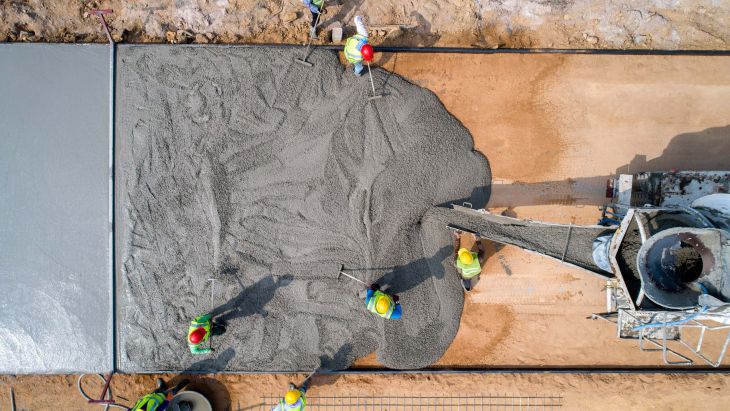“We held a series of workshops with members of the construction industry on how we could reduce emissions from the sector,” said Professor Julian Allwood from Cambridge’s Department of Engineering, who led the research. “Lots of great ideas came out of those discussions, but one thing they couldn’t or wouldn’t consider was a world without cement.”
Concrete is made from sand, gravel, water, and cement, which serves as a binder. Although it’s a small proportion of concrete, cement is responsible for almost 90% of concrete emissions. Cement is made through a process called clinkering, where limestone and other raw materials are crushed and heated to about 1,450°C in large kilns. This process converts the materials into cement, but releases large amounts of CO₂ as limestone decarbonates into lime.
Over the past decade, scientists have been investigating substitutes for cement, and have found that roughly half of the cement in concrete can be replaced with alternative materials, such as fly ash, but these alternatives need to be chemically activated by the remaining cement in order to harden.
“It’s also a question of volume – we don’t physically have enough of these alternatives to keep up with global cement demand, which is roughly four billion tonnes per year,” said Allwood. “We’ve already identified the low hanging fruit that helps us use less cement by careful mixing and blending, but to get all the way to zero emissions, we need to start thinking outside the box.”
“I had a vague idea from previous work that if it were possible to crush old concrete, taking out the sand and stones, heating the cement would remove the water, and then it would form clinker again,” said first author Dr Cyrille Dunant, also from the Department of Engineering. “A bath of liquid metal would help this chemical reaction along, and an electric arc furnace, used to recycle steel, felt like a strong possibility. We had to try.”
The clinkering process requires heat and the right combination of oxides, all of which are in used cement, but need to be reactivated. The researchers tested a range of slags, made from demolition waste and added lime, alumina and silica. The slags were processed in the Materials Processing Institute’s EAF with molten steel and rapidly cooled.
“We found the combination of cement clinker and iron oxide is an excellent steelmaking slag because it foams and it flows well,” said Dunant. “And if you get the balance right and cool the slag quickly enough, you end up with reactivated cement, without adding any cost to the steelmaking process.”
The cement made through this recycling process contains higher levels of iron oxide than conventional cement, but the researchers say this has little effect on performance.
The Cambridge Electric Cement process has been scaling rapidly, and the researchers say they could be producing one billion tonnes per year by 2050, which represents roughly a quarter of current annual cement production.
“Producing zero emissions cement is an absolute miracle, but we’ve also got to reduce the amount of cement and concrete we use,” said Allwood. “Concrete is cheap, strong and can be made almost anywhere, but we just use far too much of it. We could dramatically reduce the amount of concrete we use without any reduction in safety, but there needs to be political will to make that happen.
“As well as being a breakthrough for the construction industry, we hope that Cambridge Electric Cement will also be a flag to help the government recognise that the opportunities for innovation on our journey to zero emissions extend far beyond the energy sector.”
The researchers have filed a patent on the process to support its commercialisation. The research was supported in part by Innovate UK and the Engineering and Physical Sciences Research Council (EPSRC), part of UK Research and Innovation (UKRI). Julian Allwood is a Fellow of St Catharine’s College, Cambridge.
Reference:
Cyrille F Dunant, Shiju Joseph, Rohit Prajapati, Julian M Allwood. ‘Electric recycling of Portland cement at scale.’ Nature (2024). DOI: 10.1038/s41586-024-07338-8
















